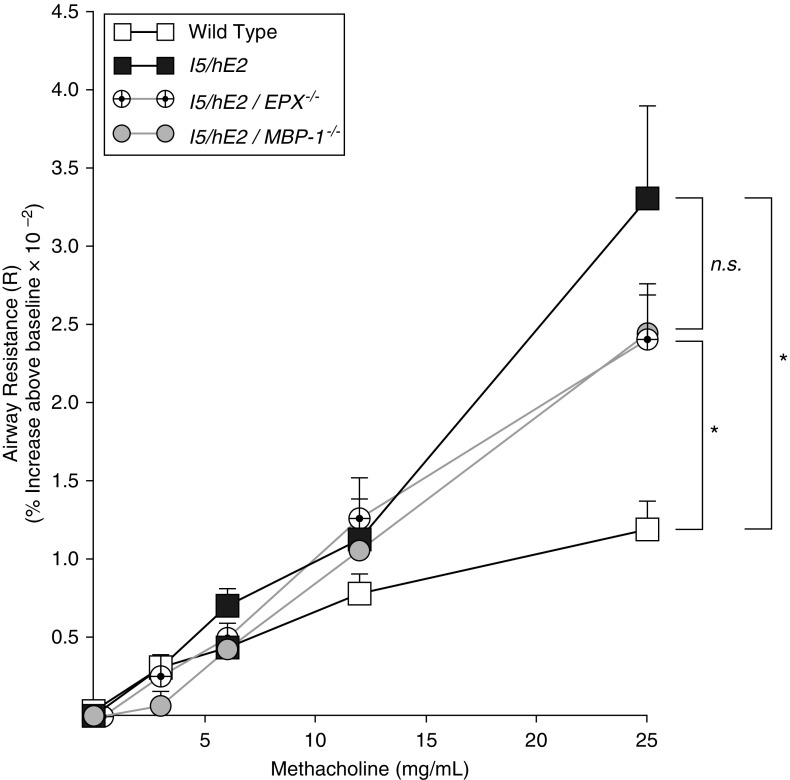Figure 7.
The induced airway hyperresponsiveness linked with the pulmonary eosinophilia of I5/hE2 mice is independent of the eosinophil degranulation leading to the release of either eosinophil peroxidase (EPX) or major basic protein-1 (MBP-1). Aerosolized methacholine-induced airway resistance was assessed using an invasive ventilator-based technique (flexi-Vent; SCIREQ). I5/hE2 mice display an increase in airway resistance as a function of exposure to increasing concentrations of aerosolized methacholine (responses of wild-type C57BL/6J mice are shown as a negative control). Surprisingly, the absence of either EPX (i.e., I5/hE2/EPX−/−) or MBP-1 (i.e., I5/hE2/MBP-1−/−) expression had no significant effects on the methacholine responses displayed by the parental I5/hE2 model. Baseline airway resistance (cm H2O⋅s/ml) of each experimental cohort (mean ± SEM): C57BL/6J wild-type, 0.89 ± 0.25; I5/hE2, 1.03 ± 0.07; I5/hE2/EPX−/−, 0.93 ± 0.07; and I5/hE2/MBP-1−/−, 0.87 ± 0.09. Cohort sizes: C57BL/6J, n = 9; I5/hE2, n = 10; I5/hE2/EPX−/−, n = 13; I5/hE2/MBP-1−/−, n = 10. Error bars represent SEM. *P < 0.05; n.s. = not significant.

